What’s the difference between cheetah, leopard, puma, jaguar, and panther. When you see a cheetah, leopard, puma, jaguar, and panther you think they all are “big cats” related to lions and tigers. This is true but there are major key differences between all these animals.
The “Big cats” refer to the animals of the genus Panthera. The Panthera genus contains the main roaring cats, also known as “the big four” — tigers, lions, jaguars, and leopards. While the general cat family is in the genus Felidae which includes pumas, cheetahs, and lynx.
The members of this family are also called a felid. The term “cat” refers both to felids in general and specifically to the domestic cat. These cats don’t roar. The Felinae is a subfamily of the family Felidae. This subfamily comprises the small cats, they are able to purr but not roar.
Now let’s discuss the difference between cheetah, leopard, puma, jaguar, and panther.
1. Cheetah
Cheetahs are very different from other wild cats. They have their own genus Acinonyx, the only living species in this genus is the cheetah. They are found in the open grasslands of Africa and Asia. You can easily identify a cheetah from its body. They have a greyhound-like thinner body frame with a deep chest and narrow waist.
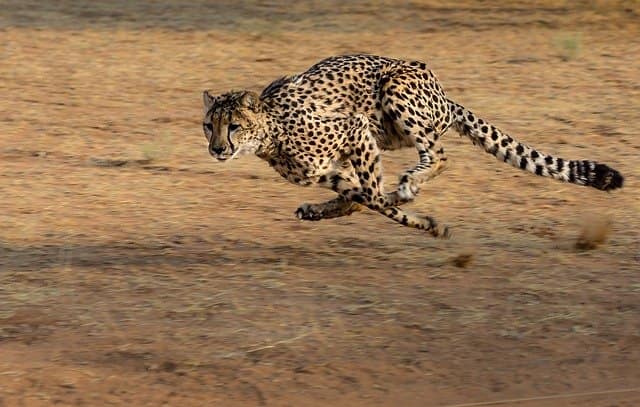
The cheetah is the fastest land animal on earth estimated to be capable of running at 80 to 128 km/h. Their lightweight thinner body structure allows them to run at this speed.
They weigh up to 35 to 72 kg, the total head-and-body length of an adult animal is from 110 to 150 cm, while the tail can measure 60 to 84 cm in length. Cheetahs are 70 to 95 cm tall at the shoulder.
They have solid, round, polka-type black spots measuring 2 to 3 cm (0.79 to 1.2 in) across. These spots are not “rosettes” like the jaguars and leopards. There are no spots on their white underside, but the tail, which usually ends in a bushy white tuft, does have spots that merge to form four to six dark rings at the end.

They have black stripes on their faces, which run from the inner corners of their eyes down to the corners of the mouth. These dark areas help keep the sun out of their eyes to help them with their vision for hunting.
Are a jaguar and a leopard the same?
2. Jaguar
The jaguar is very much confused with the leopard due to the markings on the coat. It is the third-largest cat just after tigers and lions. The jaguar (Panthera onca) is a large cat species in the genus Panthera native to the Americas. They can be found in the southern United States, Mexico, most of Central America, and across the north of South America.
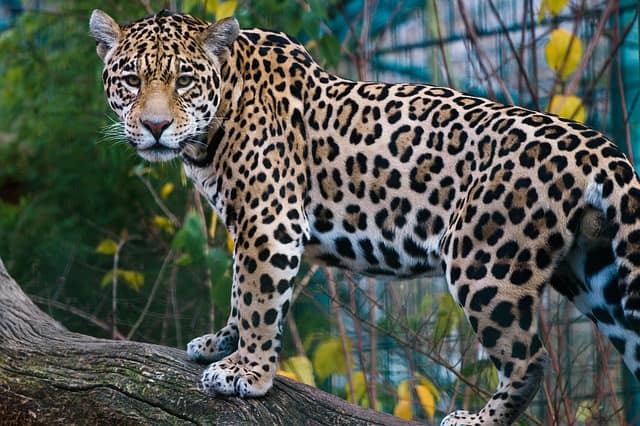
The jaguar has the strongest bite of all felids. It has a bite force of 2,000 pounds-force, which is twice the strength of a lion and the second most powerful of all mammals after the spotted hyena. The jaguar can even pierce turtle shells.
It can drag its prey weighing twice its body weight upon a tree effortlessly. It bites directly through the skull of its prey between the ears to deliver a fatal bite to the brain.
Their weight and size may to its surroundings. Their weight is generally in the range of 56–96 kilos. Larger males have been recorded as heavy as 160 kilos. In length, jaguars vary from 3.9 to 6.4 ft. They stand 63 to 76 cm (25 to 30 in) tall at the shoulders.
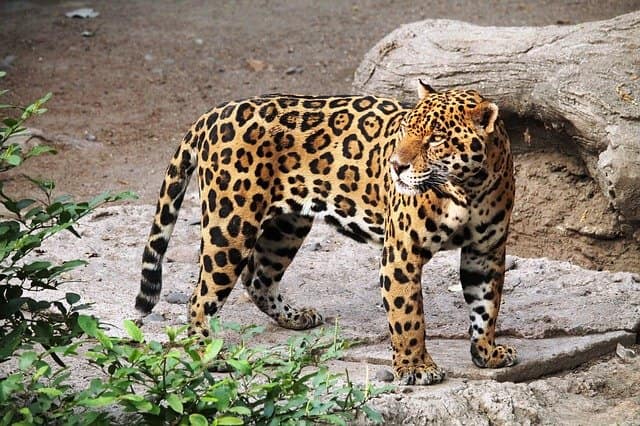
Jaguars are heavier, larger, and sturdier than leopards. Also, the rosettes on their patterning are larger, less closely packed, and usually have black dots in the centers. Rosettes on jaguars vary over individual coats and between individual animals. They may include one or several dots, and even the shapes of dots vary. Most rosettes have a black spot in the center, separated from the out ring by the animal’s yellow ground color.
3. Leopard
The leopard (Panthera pardus) is a species of wild cat in the genus Panthera, a member of the cat family, Felidae. Leopards are found mainly in sub-Saharan Africa, in some parts of Western and Central Asia, Southern Russia, and on the Indian subcontinent to Southeast and East Asia; India, China, Malaysia, and Indonesia.
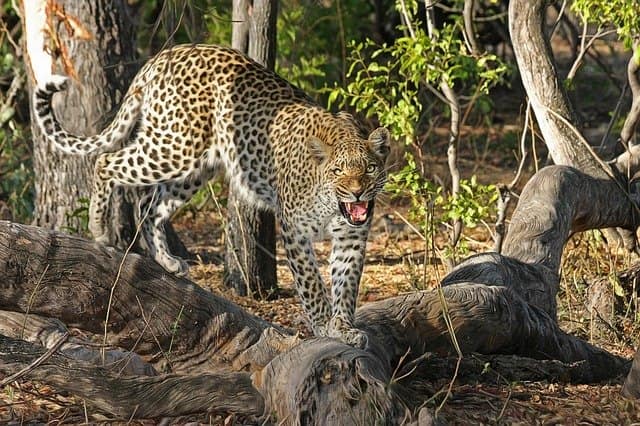
It is listed as Vulnerable species. The leopard is considered extinct in many parts of the world. These regions are Hong Kong, Singapore, South Korea, Jordan, Morocco, Togo, the United Arab Emirates, Uzbekistan, and many others.
The leopard is the smallest of the four big cats, among the tigers, lions, and jaguars. Leopards are often confused with two other spotted cats, cheetahs, and the jaguars, but the fact is the patterns of spots in each species are different.
The leopard’s fur is generally soft and thick, notably softer on the belly than on the back. Its skin color varies between individuals from pale yellowish to dark golden with dark spots grouped in rosettes. The Cheetahs have evenly spread simple spots, jaguars have smaller spots inside the polygonal rosettes. Leopards normally have smaller and rounder rosettes than those of the jaguars.

Its belly is whitish and its ringed tail is shorter than its body. Its pupils are round. Leopards living in arid regions are pale cream, yellowish to ochraceous, and rufous in color; those living in forests and mountains are much darker and deep golden.
Leopards measure 60–70 cm at the shoulder tall. The tail reaches 60 to 110 cm, whereas the head and body length is between 125 and 165 cm. The body is comparatively long for a cat and the legs are short. Male leopards can reach the weight of 96 kg.
Difference between the rosettes of Leopard, Cheetah, and Jaguar.
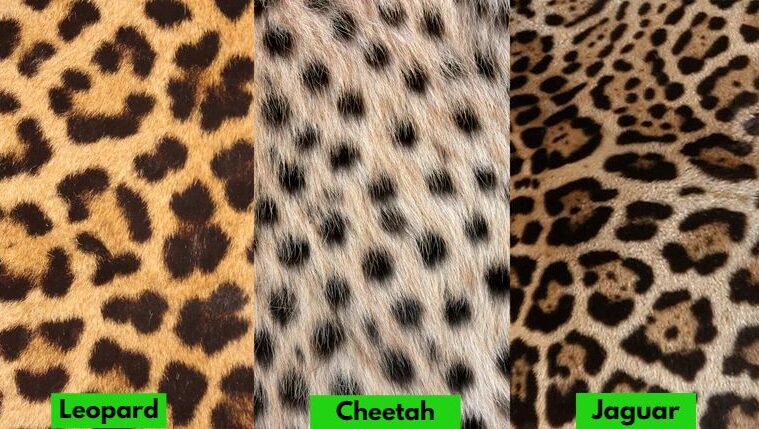
Is a panther and jaguar or leopard the same?
4. Panther
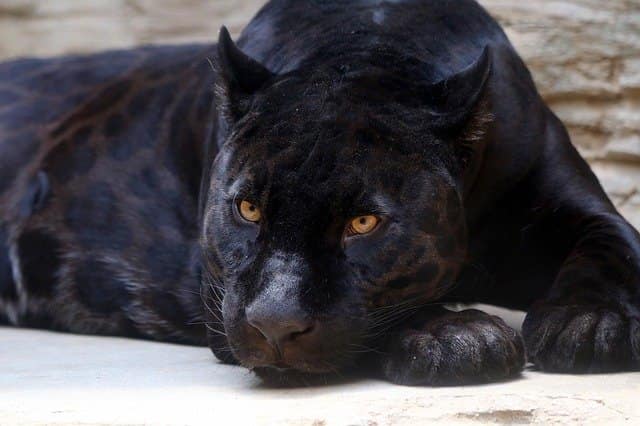
The clear and most simple answer is that there are no actual species called the panther. The “panther” is a name given to either leopards or jaguars that are melanistic in nature. They have all black coats, due to an excess of the dark pigment melanin. The Black Panthers are either melanistic leopards or melanistic jaguars. While the coat is usually all black, sometimes the rosette markings can just be seen if you look closely.
Also read: 20 Incredible Melanistic Animals
Now that we have mentioned the difference between cheetah, leopard, jaguar, and panther only puma is left.
5. Puma
Puma is a genus in the family Felidae whose only extant species is the cougar. Pumas are also known as cougars, mountain lions, catamounts, and over 40 other local names. They can be found all over Canada to the southern Andes of South America. But Pumas are primarily found in the mountains of North and South America.
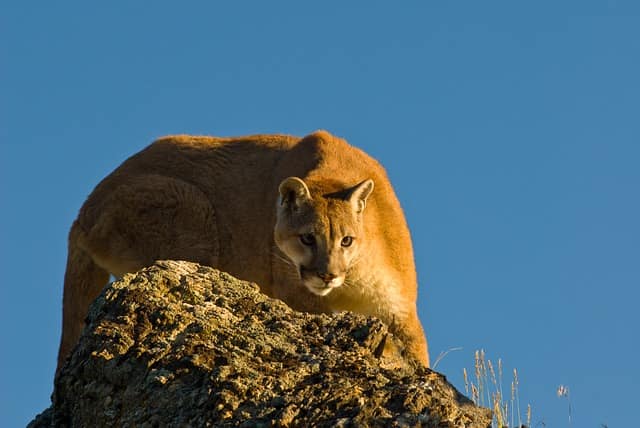
It is more closely related to the domestic cat than to a lion. The Puma or the cougar holds one of the Guinness World Records for having the most names? Often called “the cat of many names,” it’s referred to as the puma, panther, mountain cat, mountain lion, mountain screamer, painter, and catamount.
You can call them whatever you like puma, mountain lions, or cougars they all are the same animal. The name used depends on location, and also on their size and appearance. There are some slight contrasts in overall size due to geographical concerns, diet and climate.
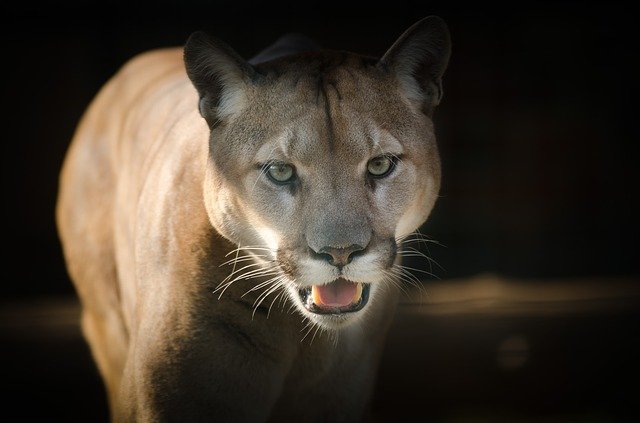
The most notable thing about the puma is their erected ears. They have slender bodies, with round heads and erect ears. Pumas are found mostly in mountainous regions, so they have a thick fur coat to help retain body heat during freezing winters.
The puma’s fur varies in color from brown-yellow to grey-red. Individuals that live in colder climates have coats that are greyer than individuals living in warmer climates with a more red color to their coats. They don’t have spots on their body.
They can reach a length of 5 feet (1.5 meters), with the tail length ranging from 2 to 3 feet (0.6 to 0.9 meters). Males are heavier than females, at between 52 and 100 kilograms. They can reach speeds of up to 80 km/h.

